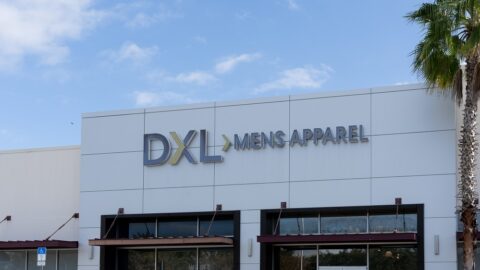With record-setting online sales looming on the horizon for the holiday season, retailers also are bracing for an onslaught of online returns. Those retailers selling primarily or exclusively online are expecting a corresponding hike in the volume of returns, but not much difference in the return rates they have become accustomed to.
However, for a typical omnichannel retailer, COVID-19 has made their digital sales ascend much faster than ever before, with online transactions taking a higher share of overall sales. These retailers will face return rates in the range of 3X to 4X in-store return rates, knocking their financial models out of whack and straining operations, as discussed previously.
The good news is that retailers can make a number of adjustments both to reduce return rates and to make the overall process more streamlined and less costly. In addition, new vendors are entering the market with innovative ideas and technologies that can ease the returns process for both the customer and the retailer, as well as improve profitability.
“In recent years, returns have moved from a staid logistical issue to a dynamic and often strategically important part of the retail business model,” wrote Wharton marketing professor Thomas S. Robertson and his co-authors in a research paper recently published in the Journal of Retailing. “Returns represent a developing opportunity for retailers, with businesses exploring types of return policies and practices that never would have been considered in the past.”
Here are five ways retailers can modify their returns practices to make a positive impact on their bottom lines:
- Direct consumers to physical locations to decrease costs;
- Automate actions that benefit the retailer based on customer data and behavior;
- Personalize engagement to improve the customer experience (CX) and reduce fraud;
- Reduce the likelihood of returns through technology; and
- Optimize the handling of returned merchandise in the retailer’s facilities.
Direct Consumers To Physical Locations
If the number of companies offering the service is any measure, the hottest thing in online returns is the development of networks of physical locations where online orders can be returned. These locations include physical stores that take in returns for other retail brands, as well as office buildings, post offices and shipping company stores, kiosks and more.
Consolidating packages in a limited number of locations is much more efficient and less costly than processing single shipments from individual homes. From a customer perspective, according to research from Optoro, 66% of consumers prefer to bring returns to stores rather than shipping them back.
Founded in 2015, Happy Returns, with its branded network of Return Bars, is one of the pioneers. Before the pandemic, Happy Returns operated more than 700 Return Bars. Although all of them were closed during the COVID shutdowns, more than half have reopened, said CEO David Sobie in an interview with Retail TouchPoints. Despite the financial impact of the pandemic, Sobie is optimistic about the remainder of 2020. Based on various partnerships he has in the works, he expects to have 2,000 Return Bars operating by the turn of the year.
Happy Returns works with retailers in two ways. One way is for retailers to host Return Bars within their stores. Additionally, retailers can use software and reverse logistics services from Happy Returns, which includes access to Return Bars for their customers.
On Sept. 15, Happy Returns announced its newest agreement to provide reverse logistics for Dressbarn. At the end of 2019, Dressbarn completed “the orderly wind down” of its 650-store retail business. Retail Ecommerce Ventures (REV) purchased the intellectual property assets and relaunched the brand as digital-only.
“Happy Returns has redesigned the online shopping experience where it was needed most — the returns process,” said Shayan Zadeh, CEO of Dressbarn in an email provided to Retail TouchPoints. “We have been able to delight customers at every step of the online purchasing funnel, returns included, by building our product with convenience, ease and comfort in mind.”
Happy Returns is not alone. Last year, Narvar launched a concierge network with 8,000 Walgreens locations offering FedEx OnSite services, as well as select Nordstrom stores.
UK-based Doddle is planting its flag in the U.S. through a pilot agreement with the U.S. Postal Service, and it will be working to create its own network of convenient third-party locations “outside and inclusive of the USPS,” said Dan Nevin, North America CEO for Doddle in an interview with Retail TouchPoints.
Automate Actions That Benefit The Retailer
Although some online retailers have adopted “no questions asked” return policies, “there is nothing you can do to improve a problem without knowing the size and shape of it,” said Nevin. “By understanding what’s being returned, who’s returning it and why, the retailer can automate decisions about the return, and the customer still has a very quick and easy process.”
Based on customer data, intelligent software can trigger actions that save margin or reduce losses for a retailer. For example, a customer returning a pair of shoes that are the wrong size might be shown different sizes that are available. If the customer buys immediately, the sale is saved, although the retailer had to bear the cost of three shoe shipments. The system could be set up to make such an offer only when the profit margin exceeds the shipping costs.
By aggregating returns data, retailers can identify trends or issues that they want to boost or lessen. “The return is actually a valuable piece of information,” said Chris Ventry, VP in the Consumer and Retail practice of SSA & Company in an interview with Retail TouchPoints. “Data such as the reason for the return can be appended to that customer record going forward, and the retailer can try to sway that customer in the future to reduce the possibility for a purchase mistake.”
Customer data might even expose a problem that can be easily solved. For example, one retailer had a very high return rate on a pair of pink socks, said David Morin, Director of Retail Strategy at Narvar in a video. “When they dug into the data, they saw that most consumers were returning that socks with the reason code ‘not as pictured’.” After comparing the color of the physical sock with the photo on the web site, the retailer changed the picture and saw an immediate decrease in the return rate.
Personalize Engagement
With returns, retailers always must balance the possibility that they are dealing with a fraudster against the possibility of alienating their best customers, but today’s digital technology can distinguish between the two and automatically act accordingly.
According to a report from Appriss Retail, 8.8% of returns are fraudulent, adding up to $27 billion in lost sales in the U.S. in 2019 — an increase of 35% over 2018.
Returnly’s 2020 State of Returns Report found that the best customers are also those most likely to make a return. Just 10% of customers are responsible for 39% of a brand’s revenue, but these brand loyalists also are 3X more likely to return merchandise than other customers.
Solutions that can access data from customer records, such as the customer’s value to the retailer and his/her purchase and return history, can influence how returns are handled. For example, loyal customers can get preferential treatment, such as the opportunity to keep a product if the return shipping cost outweighs the retailer’s profit margin. In contrast, a return request that exhibits the hallmarks of fraud might be rejected without human intervention.
“Viewing returns through the lens of profitability is a much better route to financial soundness than having a blanket approach to return policies,” said Andy Mantis, Head of Data Insights for 1010data.
Reduce The Likelihood Of Returns
To compensate for the fact that they cannot try on, lie on, feel, smell or see merchandise online, approximately one-fourth of consumers typically purchase multiple items “knowing they’re going to return one or two or all of them,” Ventry noted. Retailers have a strong financial incentive to look for creative and technological solutions designed to scale back this habit.
Web site content must help consumers make good choices. This includes accurate and complete descriptions, product dimensions and sizing charts, as well as user reviews. No retailer wants negative comments to deter a shopper from buying, but if the review is honest and accurate, it might prevent a disappointed customer and a return.
In addition, “technology and third-party services are trying to appeal to this retailer pain point by preventing returns,” said Alex Fitzgerald, principal in the consumer practice of Kearney in an interview with Retail TouchPoints. She noted that a data-driven personalization platform like True Fit “helps consumers determine their right size of clothing to prevent fit issues.”
AI-powered recommendation engines can help customers make better buying choices based on their own past behaviors, and augmented reality (AR) and 3D imaging are making the virtual world look and feel more like real life.
Optimize The Handling Of Returned Merchandise
Another area where retailers can reduce costs is at the point where returns reach a retail store or e-Commerce facility, when people — or software — must decide where they go next. Options include a manufacturer, a liquidator or the retailer’s warehouse.
“Planning the flow of goods and clearly communicating policies to the people implementing the plan can dramatically reduce margin loss due to returns,” said Greg Buzek, President of IHL Group. “If someone is touching an item three or four times while deciding how to deal with it, you’ve added three to four times to labor.”
Optimized systems automate where each product goes based on vendor contracts, the probability of resale and other factors. According to IHL Group data, retailers in the food/drug/mass merchant channel can recapture 70% of lost margin, and department and specialty stores can recapture 83%, when the returns process is optimized.
Although many retailers have “truly awful” returns management systems, there are signs that others have been making strides in improving their returns processes and technologies over the past year, said Sender Shamiss, CEO of goTRG (The Recon Group Inc.) in an interview with Retail TouchPoints.
“During COVID, goTRG’s data shows that retailers with sound resale strategies or returns management partners have thrived. In the beginning of 2019, they were recovering around 60% of the value of their returns,” Shamiss said. “Since March 2020, recovery rates have increased by almost 20% year-over-year, holding steady at around 80%.”













